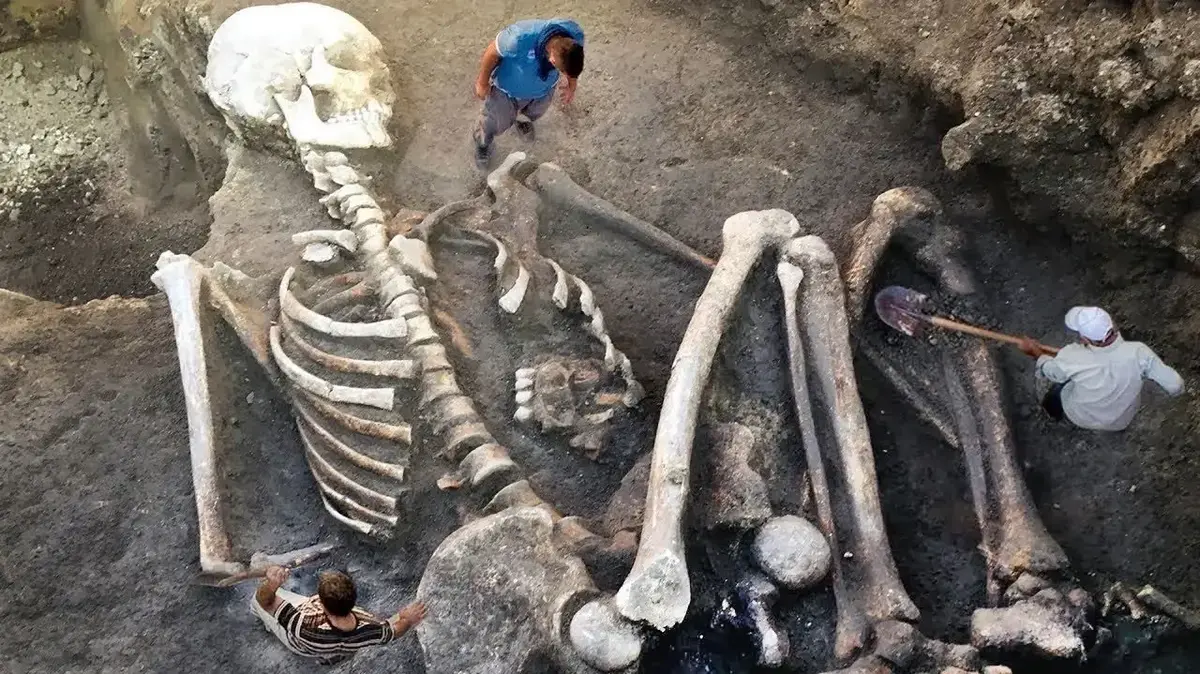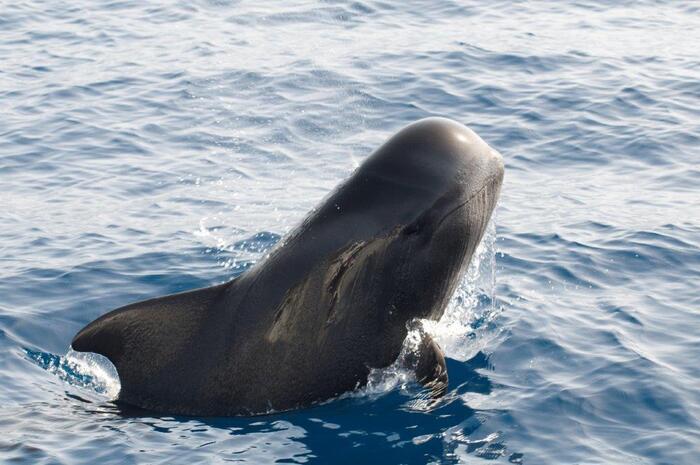Animal mummification
was a common practice in ancient Egypt, but knowing what's in the still-sealed boxes is a challenge.
A scientific team has revealed with a non-invasive technique that in some
there are still bone remains
and remnants of the fabric in which they were wrapped.
A study published by
Scientific Reports
and signed by the British Museum analyzed the contents of
six of these coffins
made of a copper alloy and sealed, for which neutron tomography was applied, which is not invasive and is much more precise than rays. X, with which they had already been examined.
Animal coffin surmounted by two lizard figures (top and side view).
Neutron images show textile wrappings and a bone (arrow) (EFE/The Trustees of the British Museum and O'Flynn et al.).
In ancient Egypt, based on previous research, some mummified animals are believed to
have been physical incarnations of deities
, while others may represent offerings to gods or have been used in ritual performances.
The six boxes examined, which were either coffins or votive boxes, were made of a copper alloy and analysis found that
three contained animal remains,
possibly
lizard
, and fragments of linen with which they were wrapped.
The researchers believe that there is a link between the figures that are represented on the lid of the boxes and the remains they contain.
They discover the secrets of the coffins of mummified animals in Egypt.
The team, coordinated by Daniel O'Flynn, took images of six of the boxes.
Three are topped with figures of lizards and eels, dated
between 500 and 300 BC.
C.
and were discovered in the ancient city of Naukratis.
A fourth coffin, with a lizard figure and dated between 664 and 332 BC.
C, was discovered in the ancient city of Tell el-Yehudiyeh, and the other two, with figures partly eel and partly cobra
with human heads
, are from between 650 and 250 BC.
C. and of unknown origin.
lizards in coffins
The authors identified bones in three of the coffins, including
an intact skull
with dimensions similar to those of a lizard group containing endemic North African species, as well as indications of broken bones in two others.
In addition, they identified textile fragments inside three boxes, which were possibly made of
linen
, a material that was commonly used in mummification in Ancient Egypt and the authors believe that the animals were wrapped in them before being placed in the coffins.
In ancient Egypt it is believed that some mummified animals were physical incarnations of deities (AFP).
In three of the boxes they also detected
pieces of lead
, which suggests that it could have been used to help distribute the weight in two of them and to repair a hole found in the other.
Lead may have been chosen because of its status as a
magical material
in ancient Egypt, as previous research has suggested that it was used in amulets and love curses.
There is a link between the figures that are represented on the coffins and the remains they contain.
Three of the boxes have small handles that could have been used to suspend the lighter ones from the walls of shrines, temples, statues, or boats during religious processions.
The heaviest, without handles and containing lead could have been used for other purposes, consider the signatories of the study.
EFE Agency.
look also
The terrible end of the priest who flew hooked on 1,000 balloons
look also
Dracula the parrot: raven face, parrot body and terrifying cry
look also
They are looking for people who dress up as birds to scare seagulls
GML








